The first round of the 2018 NFL draft was all about the quarterbacks. We had five in the first round. Day 2? That's where running backs and receivers went flying off the board. And Day 3 is where we saw teams trying to find gems and value. So who had the best class?
As I say every year, the draft is about adding talent, but winning is about talent development. I know I can't grade a class on performance for at least a few years, which is a reason I audit old drafts. What I do here is assess two main things, using my own player grades as the prism:
How effectively did a team address key personnel voids?
How efficient were they in maneuvering on the draft board?
Grading scale: In my mind an A means it's exceptional; a B is pretty good; a C is average, with hits and questions marks; a D means below average with some big questions. An F ... well, keep reading.
Let's go from best class to worst class, with classes with the same grades in alphabetical order. Click the links below to go directly to your favorite team's grade:
ARI | ATL | BAL | BUF | CAR | CHI | CIN | CLE | DAL | DEN | DET | GB | HOU | IND | JAC | KC | LAC | LAR | MIA | MIN | NE | NO | NYG | NYJ | OAK | PHI | PIT | SF | SEA | TB | TEN | WAS
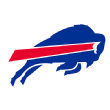
Buffalo Bills: A
Top needs: Quarterback, offensive line, wide receiver
That the Bills were targeting a quarterback tends to make you forget this was a playoff team, so the first round was an interesting mix, as they added both high-upside potential at the game's most important position, and also immediate help at a spot where rookies can often be found contributing. They gave up some notable draft value in second-round picks to maneuver, but I'm not sure any team added this kind of high-upside talent. Key word: upside.
We know Josh Allen (pick 7) needs development as a player with great traits but lacking polish out of Wyoming, but development is a given for any QB. The addition of Tremaine Edmunds (16) means that the Bills managed to get two of my top 11 players in this draft class, and Edmunds is likely to help right away. The useful immediate help and long-range upside wasn't limited to Round 1, either. Harrison Phillips (96) is an interior disruptor who can jump into the mix in Week 1. Kyle Williams won't play forever (probably?) so this was a good fit. Taron Johnson (121) can get on the field early. He won't be a No. 1 corner, but in the fifth round, he's a decent get. Ray-Ray McCloud (187) is a wildcard, but he can jump into the return game and could factor into the wide receiver depth chart.
Yeah, it'll come down to Allen, but if he reaches his upside, you change the direction of the franchise. He could be a perfect fit in Buffalo. As it always goes with big bets on quarterbacks, time will tell the story.
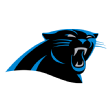
Carolina Panthers: A-
Top needs: Wide receiver, cornerback, defensive end
Like their NFC South rivals in Atlanta, the Panthers went with a wide receiver in Round 1, taking Maryland's D.J. Moore at No. 24. I'm a big fan of Moore, who is more than a workout warrior, though he put up freakish numbers at the combine with a 4.42 40 time and 39.5-inch vertical. He was productive for the Terps, and he's great after the catch. He runs through arm tackles, and he's built like a tailback. The Panthers needed a guy like that for Cam Newton, and it wasn't going to be veteran Torrey Smith (another Terp), who was brought in last month. Moore could be Newton's favorite target in a hurry.
After parting ways with Daryl Worley, the Panthers needed cornerbacks to compete for the spot opposite James Bradberry. They added two on Day 2 with Donte Jackson (pick 55), one of the fastest players in this class (4.32 40), and Rashaan Gaulden (85), whom I had rated as more of a sixth-round talent. (Remember that veteran safety Kurt Coleman is no longer with the team.) Jackson is only 5-10 and 178 pounds, but he's an elite athlete. Ian Thomas could develop into the heir apparent to Greg Olsen, and to get my fourth-ranked tight end at 104 is great value. Marquis Haynes (136) is another good player on Day 3.
If there's an issue with this class, it's not getting a pass-rusher. Are they really going to rely on 38-year-old Julius Peppers to play almost 500 snaps again? Mario Addison is also going to be 31 by Week 1, and you face Matt Ryan, Drew Brees and Jameis Winston six times a year in that division. I liked the depth of this class, though, and won't ding it too much. There is value from top to bottom.
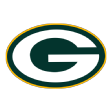
Green Bay Packers: A-
Top needs: Cornerback, linebacker, offensive tackle
The Packers think they're ready to compete for a Super Bowl in 2018 if Aaron Rodgers stays on the field and if they can defend the pass. That was a major weakness last season -- the Green Bay secondary couldn't stop wide receivers. It gave up an NFL-high 21 touchdown passes to receivers. So new GM Brian Gutekunst went out and got two corners with his first two picks to address that problem, and I like both players. Jaire Alexander (pick 18) is an elite athlete and playmaker. Josh Jackson (45) led the FBS with eight interceptions in 2017. He's a ball hawk, and I was really surprised that the Packers were able to get him when they did. Possible steal. They're going to create turnovers. Kevin King had an injury-plagued rookie season and started only five games, but he's a good player, too. That's a talented cornerback group. I also liked third-round pick Oren Burks, who probably will play inside linebacker. He was versatile and consistent at Vanderbilt.
The best move the Packers made this weekend, though, was adding an extra 2019 first-round pick. New Orleans traded up from No. 27 to No. 14 to take Marcus Davenport, and Green Bay moved out of Round 1 (and then later moved back in by dealing third- and sixth-round picks to Seattle). That's a huge chip to have next year, when the pass-rushing prospects should be better than they were in this class.
Elsewhere, J'Mon Moore (133) offers some receiving depth, and Cole Madison (138) reminds me a lot of what David Bakhtiari was coming out of college. That worked out just fine. JK Scott (172) was my third-ranked punter. Equanimeous St. Brown (207) is worth a late Day 3 pick as a talented but inconsistent wide receiver. The reason this class gets an "A" is the 2019 first-rounder it added from New Orleans. Now, that could end up being a very late Day 1 pick. I don't care. I really like what Gutekunst did in his first draft.

Philadelphia Eagles: A-
Top needs: Offensive tackle, linebacker, wide receiver
It's good to be the Eagles. Coming off a Super Bowl title, they have no major needs and get to develop starters -- not try to draft plug-and-play guys. They're looking for impact depth. That's why we saw GM Howie Roseman trade out of the last pick in the first round to move down 20 spots and add an extra 2019 second-round pick (plus pick 125 in this draft). That 2019 pick is an extremely valuable one to stash away.
Now, you have to laugh at the Eagles trading up three spots to take tight end Dallas Goedert ahead of Dallas (49) with the draft in the Dallas area. And my best comp for Goedert all along was Zach Ertz, so now the Eagles have both players. Goedert is the best pass-catching and most athletic tight end in this class. Remember: Trey Burton and Brent Celek are both gone from 2018, so Goedert is going to play. Philadelphia led the league with 110 receptions by tight ends last season. If Goedert had gone late in Round 1 -- maybe to Philly! -- it wouldn't have surprised me.
The Eagles didn't have a third-round pick due to the Jordan Matthews-Ronald Darby swap with Buffalo last year, so Philly had only one pick on the first two days. Fourth-rounders Avonte Maddox (125) and Josh Sweat (130) are talented and athletic. Maddox was a four-year starter who ran a 4.39 at the combine. Sweat had 29 tackles for loss in college and had a 39.5-inch vertical jump at the combine. I moved up Matt Pryor (206) over the past few weeks after people in the league told me he was going to move to guard. And how about the Australian former rugby league player Jordan Mailata going late in the seventh round? Philly is going to try to make him an offensive tackle.
The reason this class isn't a straight "A"? Not a single running back (though they did announce the re-signing of Darren Sproles when the day ended). If that's the only bad thing I can say, the Eagles must have had a good day.

Baltimore Ravens: B+
Top needs: Wide receiver, guard, tight end
There's no question the Ravens have disappointed lately. They haven't made the playoffs the past three seasons. The offense and Joe Flacco have taken a step back. So GM Ozzie Newsome, in his last draft in charge, is shaking things up, putting the 33-year-old Flacco on notice. Baltimore traded up into the last pick of the first round -- at a big price, surrendering next year's second-round pick, plus picks Nos. 52 and 125 -- to get Lamar Jackson. The 2016 Heisman Trophy winner is the rawest of the top quarterbacks in this class, but he's an electric talent. And with Flacco there and under contract for the short term, Jackson doesn't need to play right away. He can learn the game and keep developing until he's ready. It's a good spot for Jackson.
Elsewhere, the Ravens became the only team since the 2012 Colts to take two tight ends in the first three rounds, grabbing Hayden Hurst (pick 25 after trades down from 16 and 22) and Mark Andrews (86). Ben Watson accounted for 64 percent of the Ravens' tight end yardage last season, but he's gone. Hurst is a complete player who can line up next to the tackle or in the slot, while Andrews is essentially a 6-5 slot receiver. He had a great college career, and he's going to be a tough cover for linebackers and safeties. We know Flacco loves throwing to tight ends, but sometimes he can rely on them too much. I liked the value getting tackle Orlando Brown at 83, and it's cool to see him drafted by the team that his father "Zeus" played for. Brown's tape shows a first-round player, but he fell because of a disastrous combine. He could start at right tackle in 2018.
And of course, Ozzie took two more Alabama players in his final draft. Cornerback Anthony Averett (118) has a thin frame, but he ran a 4.36 at the combine. Center Bradley Bozeman (215) anchored the Crimson Tide offensive line for 31 starts. Jordan Lasley (162) has some off-field issues, but he was Josh Rosen's favorite target and took over games at times. He's worth the risk there. Safety DeShon Elliott (190) had six interceptions (two pick-sixes) last season.
The big takeaway here is putting a clock on Flacco's time in Baltimore. Jackson isn't ready to contribute right now, but he could be in 2019.
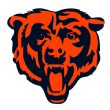
Chicago Bears: B+
Top needs: Guard, linebacker, wide receiver
Let's face it: Mitchell Trubisky didn't have a great rookie year. There's a reason John Fox is out and Matt Nagy is in. Nagy, who coached under Andy Reid in Kansas City, is an innovative offensive mind, and his first job is to get the best out of Trubisky. That means adapting the offense to his strengths. For GM Ryan Pace, the best way to help Trubisky is to get him some weapons, and that's clearly what was addressed this offseason with free-agent deals for pass-catchers Allen Robinson, Trey Burton and Taylor Gabriel. Pace even brought in kicker Cody Parkey to get some points on the board. I believe in Trubisky's talent -- if he's put in the right situation. And now the situation is much better for him to have a productive 2018.
To continue the theme of helping Trubisky, the Bears added James Daniels (pick 39), my second-ranked center who could play guard next to Cody Whitehair, and moved up to grab the draft's most underrated receiver in Anthony Miller (51). It was a lot to give up -- a 2019 second-round pick and a fourth-rounder this year -- but Miller will play early and often. The former walk-on had 96 catches and 18 touchdowns in 2017.
Like I said after Thursday night, I didn't expect Roquan Smith to be on the board at No. 8, and he's going to become the face of the Bears' defense. He's not built like Brian Urlacher, but he's a sure tackler and sideline-to-sideline linebacker. He's also going to be a leader on an improving -- and young -- defense. Joel Iyiegbuniwe (115) is a hybrid defender who will make an impact on special teams. Kylie Fitts (181) had trouble with injuries at Utah, but he can play a role as a situational edge rusher.
This isn't a perfect class -- and that 2019 second-round pick sure could have come in handy for a rebuilding team -- but I like the players, and the biggest needs were all filled. You can't ask for much more than that.
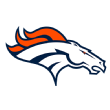
Denver Broncos: B+
Top needs: Running back, interior offensive line, cornerback
We thought Denver might take a quarterback at No. 5, but with Baker Mayfield and Sam Darnold off the board, they went best player available. Bradley Chubb is the best pass-rusher in this class by far. He's not a perfect fit for Denver's 3-4, but you have to find a way to get him on the field next to Von Miller. He's too talented. The Broncos' defense regressed in 2017 -- the Rams say "thanks" for Wade Phillips -- and ranked only 22nd in the league in sacks with 33. With Miller and Chubb on the field, they'll get after quarterbacks.
Running back was one of the Broncos' biggest needs after C.J. Anderson was released, and there weren't many guys available at 71. Royce Freeman isn't a big factor in the passing game, but he was the best back left on my board. He had 60 rushing touchdowns at Oregon and packs short-yardage punch at 230 pounds. John Elway & Co. took two receivers to help out new quarterback Case Keenum. Courtland Sutton (pick 40) is a big, raw target. McShay called him a "finesse" receiver, and I agree. You want to see him use his frame better to block off cornerbacks. DaeSean Hamilton (pick 113) impressed me at Senior Bowl practices and tested better at the combine than I expected. Possible steal.
Denver dealt Aqib Talib in the offseason, and I expect former first-round pick Bradley Roby to take that spot. But Isaac Yiadom (pick 99) is a solid player and a big, 6-1 corner who should get snaps. I like Josey Jewell (pick 106) as a dependable two-down inside linebacker, but he doesn't have the speed to cover running backs or tight ends. Troy Fumagalli (pick 156) could fill a role as a second or third tight end.
There's a lot of value in this class, and Elway & Co. deserve credit for taking the best player available in spots while also filling needs.
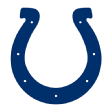
Indianapolis Colts: B+
Top needs: Outside linebacker, offensive line, cornerback
The Colts had a nice combination of additions in this draft: they got stronger up front on offense, added some upside and immediate depth on defense, and they got some potential playmakers in the run game. In two of those three, I would say the biggest beneficiary could be Andrew Luck, who is coming back from a shoulder injury and recovery that will have us all watching him closely in 2018.
One way to protect Luck is to let him hand the ball off more often with better results. If this offense can operate more out of second-and-5 and third-and-2 scenarios, you're allowing Luck to get the ball out faster. Quenton Nelson (pick 6) can help get you to second-and-5. He's a devastating blocker, and a plug-and-play guard. Maybe a Pro Bowl version. Braden Smith (pick 37) is also a tough guy up front and could factor in soon. Nyheim Hines (pick 104) and Jordan Wilkins (pick 169) are a good mix of explosiveness and production. That backfield got better. Turay has pass-rushing upside and a quick first step, and Tyquan Lewis (pick 65) is a dependable edge player, though he's not going to blow anyone away with quickness.
Deon Cain (pick 185) could provide some dividends at wide receiver. He comes from a system that has churned them out. Overall, it's a solid draft for GM Chris Ballard and Indy, which added picks via trade and provided some cover for Luck.
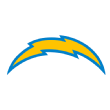
Los Angeles Chargers: B+
Top needs: Linebacker, safety, defensive tackle
It was a quiet offseason for the Chargers, but they have a lot of talent on the roster. This is a team that could win the AFC West in 2018. L.A. got very little out of its 2017 rookie class, mostly due to injuries -- watch out for Mike Williams and Forrest Lamp in 2018. Now they have some possible gems in the 2018 class, too. Derwin James was the steal of Round 1 at 17 -- plug him in at one of the safety spots on Day 1. He's a bigger defender who's not afraid to hit and wrap up -- the Chargers gave up a league-worst 4.9 yards per rush last season and tackled terribly on the second level -- and he has the athleticism and range to cover the deep middle of the field.
Uchenna Nwosu (pick 48) is one of the best pure 3-4 edge rushers in this class. He's going to be good in a situational role with Joey Bosa and Melvin Ingram already on the roster. That wasn't a need position, but I like that the Chargers went with the best player on the board. Justin Jones at 84 was a reach for me -- I thought he was more of a fifth- or sixth-round pick -- but there weren't many nose tackles left, and the Chargers had to get one. I like safety Kyzir White (119) and receiver Dylan Cantrell (191) on Day 3. White, the younger brother of Bears' wideout Kevin White, is a physical player.
GM Tom Telesco could have a few steals on his hands here.
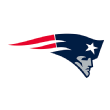
New England Patriots: B+
Top needs: Cornerback, offensive tackle, outside linebacker
The last time I saw Tom Brady on a football field, he threw for 505 yards and three touchdowns against a good defense. If the draft told us anything, it's that the decision-makers in New England think No. 12 can continue to defy age for at least another year, because unless you think seventh-rounder Danny Etling is a great developmental prospect (I don't), Brady has no Jimmy Garoppolo pushing him. In fact, the Patriots had a focus on helping Brady out. Isaiah Wynn (pick 23) has traits that say he might be better at guard, but he can play tackle. And if it wasn't such a crowded backfield, I'd peg Sony Michel as a Rookie of the Year candidate -- he's an explosive SEC-tested running back who is scary in space. I'm typically down on first-round RBs, but he was No. 28 on my board, and the Patriots nabbed him at 31.
The Patriots' defense -- the secondary in particular -- was thrashed too often last year, certainly in February, and Duke Dawson (56) could help. He's best when he can play press-man, and seems like an immediate help in the slot. Linebacker would be a major concern if I were a Patriots fan, and Ja'Whaun Bentley (143) at least has a chance to stick. Braxton Berrios (210) seems cut from New England wide receiver central casting. No surprise if he sticks and finds a way to help -- though don't expect early returns.
Every year we ask if the Patriots could have done more, but this team annually picks at the end of Round 1. You have to develop when you pick where they do, and to their credit, they do. The big question will be whether they could have used the Michel pick for needed defensive help.

Washington Redskins: B+
Top needs: Linebackers, defensive line, wide receiver
This is a good class, especially at the top. There was the biggest need filled with nose tackle Da'Ron Payne at No. 13. The Redskins had the worst rush defense in the league in 2017, surrendering 2,146 yards. And now Payne gets to partner up with a (hopefully) healthy Jonathan Allen, another Alabama defender who fell to Washington in Round 1 last year. Remember that Allen was looking like a Pro Bowl player before he got hurt. That D-line could be tough inside.
Then Washington upgraded its running game with Derrius Guice, my second-ranked back, who fell all the way to 59. Look, we don't know the exact reason why he dropped -- he has first-round talent -- but clearly teams were scared off by some questions. On the field, he's a really good player who can run over defenders with power and away from them with speed. When he replaced an injured Leonard Fournette in 2016, there was no drop-off, and he averaged 7.6 yards per carry. Also, fun note from my friends at ESPN Stats & Information: This is the eighth straight draft in which Washington has drafted a running back.
One of my favorite offensive tackles in this class is Geron Christian, who fell to Washington at 74 . He's raw, but he could be a starter at the next level. Safety Troy Apke (109) ran a blazing 4.34 40 at the combine, but he started only one season at Penn State. I graded him as a special-teamer and likely late Day 3 pick. Inside linebacker Shaun Dion Hamilton (197) has dealt with injuries, but he's a starting-caliber player if he can stay on the field. Defensive tackle Tim Settle (163) is a sleeper because the best version of him is a guy who goes much earlier. I had a fourth-round grade on Mr. Irrelevant, wide receiver Trey Quinn. That's a value pick at No. 256 for a slot receiver who caught 114 passes last season.
This isn't quite an "A," but it's close. I was surprised Washington waited until the sixth round to grab a corner.

Atlanta Falcons: B
Top needs: Guard, defensive tackle, wide receiver
Atlanta lost wide receivers Taylor Gabriel and Andre Roberts in free agency, and we knew the Falcons were going to address the position at some point in this draft. And after the season Calvin Ridley had at Alabama, I never thought he'd be available at No. 26. But then his testing numbers at the combine were just average, and he started to drop. Listen, you have to trust the tape with Ridley. He's an advanced route runner who just gets open, and that's against SEC defenses and some of the best defensive backs in the country. That's why making him the No. 3 wideout behind Julio Jones (another Bama star) and Mohamed Sanu is a great move. Matt Ryan has to be elated with his options, and the NFC South only got tougher this offseason.
Elsewhere, defensive tackle Deadrin Senat (pick 90) could be a straight replacement for Dontari Poe, who left for the Panthers in free agency. Cornerback Isaiah Oliver (58) is a supreme athlete who also returned punts for the Buffaloes. Ito Smith (126) is insurance in case they can't retain Tevin Coleman. Smith is only 5-9, but he'll help in the passing game -- he had 140 career receptions.
If there's a qualm with this class, it's that there's no guard, and they could have used a young guy to push the starters. Still, I like Ridley, Oliver and Senat.

Cincinnati Bengals: B
Top needs: Center, tight end, linebackers
I could argue that I ranked another center higher than Billy Price where the Bengals took him at No. 21, but what I can't argue is that they had to get a starting center in this draft. And my evaluations of Price and Iowa's James Daniels were close, so this isn't a reach. Cincinnati had one of the league's worst offensive lines in 2017. It has already addressed left tackle with the addition of Cordy Glenn, and I thought the Bengals might try to add some more tackle competition for the right side. But Price is a good player who I thought would drop to Round 2 because of a torn pectoral muscle at the combine. Clearly Marvin Lewis & Co. think he can be a plug-and-play center, and they need it after Russell Bodine left this offseason.
After the first round, the Bengals did a good job not reaching and taking the best players available. Jessie Bates III (pick 54) is a good player with upside. I have compared Sam Hubbard (77) to Rob Ninkovich as a Swiss Army knife-type player with versatility. He wasn't as productive last season as I thought he might be. Malik Jefferson (78) is a true 4-3 outside linebacker who was inconsistent for the Longhorns. I heard from a few guys in the league before the 2017 season that he was a potential first-round pick, but I didn't see that on tape. Running back Mark Walton (112) had a disappointing 4.60 40 time, and an ankle injury hurt him last season. I wrote about cornerback Darius Phillips (170) during the season, and thought he was a potential playmaker who could play in the slot. He had three pick-sixes in 2016. I compared quarterback Logan Woodside (249) to Case Keenum, and I wouldn't be surprised to see him make this roster.
Overall, this Cincinnati class lacks star power, but it's solid.

Houston Texans: B
Top needs: Tight end, offensive tackle, defensive back
Houston dealt both of its top picks to the Browns -- one in the trade up for Deshaun Watson on draft day last year, and the other in the salary dump for Brock Osweiler. So it's tough for a team to hit every need without those premium picks. It helps the Texans to have two extra third-round picks -- one compensatory, one from Seattle in the trade for Duane Brown last year -- and I thought they got value with all three.
I wouldn't have been shocked if safety Justin Reid (pick 68) slipped into the first round. He tested well at the combine (4.40 40 and 4.15 20-yard shuttle). And he was versatile at Stanford, playing deep safety, corner, strong safety and nickel corner. With Reid and the signing of Tyrann Mathieu, Houston has upgraded at safety this offseason. Martinas Rankin (pick 80) played left tackle in college, but he could move inside to guard or center in the NFL. The Texans have competition at all five spots.
Jordan Akins (pick 98), a former minor league baseball player, is already 26, but he could start at tight end for Houston, which lost C.J. Fiedorowicz. He played a big part of UCF's undefeated 2017 season. The Texans got only two touchdowns out of tight ends last year. Houston grabbed another with Jordan Thomas at No. 211. His nickname "Bone Crusher" is phenomenal. Keke Coutee (pick 103) is a speedy slot receiver who can help in the return game. Defensive end Duke Ejiofor (pick 177) had 16.5 sacks over the past two seasons.
Without first- and second-round picks, it's tough for the Texans to do better than they did.

Jacksonville Jaguars: B
Top needs: Tight end, wide receiver, defensive line
How loaded is that Jags defense? It already had six Pro Bowlers in 2018. Now it has one of the biggest physical freaks in the entire draft with tackle Taven Bryan, whose talent didn't match his college production. If defensive coordinator Todd Wash can get Bryan close to his ceiling, he could be a steal at pick 29. Jacksonville could move on from Malik Jackson next offseason, and Bryan might be the ready-made replacement.
I liked the pick of safety Ronnie Harrison at 93, and safety is the one spot where this defense isn't really young and fast. He has been underrated throughout his career, playing on a dominant defense with tons of NFL talent. But he's physical, and he'll help in the box. The question was true speed, because we never saw an official 40 time throughout the pre-draft process. Wide receiver D.J. Chark (61) is the best deep threat in this class, but his tape was inconsistent. Was that because of poor quarterback play at LSU? Either way, he could help replace Allen Robinson and Allen Hurns. I like outside linebacker Leon Jacobs in the seventh round. He ran a 4.48 40 at the combine at 246 pounds.
I thought Jacksonville should have addressed tight end early, but maybe the staff believes in Austin Seferian-Jenkins' ability as a blocker more than I do. If this is a team built around the running game, they could have used an upgrade on the edge. All in all, though, this is a terrific haul.

Minnesota Vikings: B
Top needs: Guard/tackle, defensive end, cornerback
The Minnesota offseason is obviously all about Kirk Cousins and making a Super Bowl run in 2018. This team is built to win now, and it has one of the NFL's best rosters from top to bottom. Don't forget about the addition of Sheldon Richardson to the defensive line. He's a game-wrecker when he's right. So GM Rick Spielman went with needs for the Vikings' first three picks, and all three could fill a role as rookies.
We know Mike Zimmer loves defensive backs, and he believes in drafting and developing them to be his guys. Spielman got his coach another talented corner to mold in Mike Hughes (pick 30), who is only 5-10 but was a ball hawk in his lone season at UCF. He had four interceptions and three touchdowns in the return game. The end of Round 1 was right where I expected him to go. Brian O'Neill (62) is a great athlete who is built like a tight end. He could play right tackle with Mike Remmers moving inside to guard. Jalyn Holmes (102) was a rotational player on one of the best defensive lines in the country at Ohio State. I would have liked to have seen better production.
Tight end Tyler Conklin (157), a former basketball player, could contribute. Defensive end Ade Aruna had a down season, but if he gets back to his 2016 form, he could be a steal.
This is a solid, if unspectacular, haul for Minnesota, and it gets better if Hughes can be special as a kick and punt returner.

New York Giants: B
Top needs: Guard, quarterback, linebacker
You can love the player but question the pick. That's the issue with Saquon Barkley at No. 2. I always say to look for running backs after Round 1. That's where the value is. Look at last year. Dalvin Cook and Joe Mixon went in Round 2, and Kareem Hunt and Alvin Kamara went in Round 3. Those are fantastic three-down backs with much smaller contracts than Barkley. Barkley will probably be great -- and the Giants haven't had a 1,000-yard rusher since 2012 -- but he's taking handoffs from a 37-year-old quarterback in Eli Manning, who has been objectively pretty bad in recent years for long stretches. So that's why I would have gone with Sam Darnold here. Get the quarterback who's going to take Eli's place because the Giants don't pick this early ever.
Again, though, I like the pick of Will Hernandez at the top of the second round (pick 34). He's going to help pave the way for Barkley, and he fills a need after losses in free agency. Lorenzo Carter (66) is a good outside linebacker who is a fit in New York's new 3-4 defense. I thought he could sneak into the top 40 picks after he ran a 4.50 40 at the combine. He's not a true pass-rusher, but he could play inside. B.J. Hill (69) is a powerful nose tackle who started 44 games at NC State.
Grabbing Kyle Lauletta at No. 108 is good value, but he doesn't have an NFL arm at this point. He's a touch passer, and he has to get stronger. He's going to compete with last year's third-round pick Davis Webb to back up Manning, and maybe the Giants will find their quarterback of the future there after a couple of years of development. RJ McIntosh (139) was one of my favorite underrated players, and he could be a steal. He's quick and athletic, and he has a motor. He'll probably play end.
Again, I'm not going to crush GM Dave Gettleman's first draft in charge of the Giants. I like the players he got, and we clearly have a different philosophy.
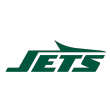
New York Jets: B
Top needs: Quarterback, offensive line, wide receiver
Jets GM Mike Maccagnan went for it last month, giving up three second-round picks -- two this year, one next -- to move up three spots from No. 6 to No. 3. And the Jets have to be thrilled that quarterback Sam Darnold made it to them. Darnold looked like a lock to be the No. 1 pick after the 2016 season, but he had a shaky season in 2017, committing 22 turnovers (13 interceptions) and developing a few bad habits with his footwork. If he can get that corrected, watch out. New York would have a franchise passer for the next 15 years. If he keeps turning the ball over, it's not going to be pretty in the AFC East. Darnold needs to get back to his 2016 form -- this Jets draft is all about whether he's the answer.
Without those second-round picks, it's tough for New York to fill holes elsewhere. And this is a team with several holes. The Jets filled a few in free agency, throwing money at cornerback Trumaine Johnson and linebacker Avery Williamson, for instance, but there aren't many playmakers here. Who is Darnold -- or Josh McCown -- going to throw to in 2018? I don't think Terrelle Pryor Sr. is the answer, and Robby Anderson has off-field issues. I did like the pick of Nathan Shepherd at 72, an active defensive tackle who showed at the Senior Bowl against better competition that he belongs. Tight end Chris Herndon IV (pick 107) was rising up boards over the last few weeks. Cornerback Parry Nickerson (197) ran a 4.32 40 at the combine and was a four-year starter at Tulane.
As I said, this Jets draft is all about Darnold, but giving up three second-round picks to move up three spots is a ton. I think he's going to end up playing early.
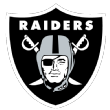
Oakland Raiders: B
Top needs: Cornerback, inside linebacker, offensive tackle
Two things are pretty clear to me in looking at this Raiders draft: They know that if they don't protect Derek Carr they're in trouble, and they're willing to bet that new coach Jon Gruden and his staff can develop some high-ceiling talent that also comes with risk. The Raiders moved down in Round 1 and landed Kolton Miller (pick 15), who reminds me of former Patriot and newly-minted Giants left tackle Nate Solder. This is a great athlete with a huge frame who projects as a good NFL left tackle if you maximize the talent. There's no guarantee. Third-round pick Brandon Parker (65) is the same in that he's got the frame, but new O-line coach Tom Cable has his work cut out for him. Protect Carr and you're competitive, and with Donald Penn now 35, it's clear that's the objective.
Arden Key (87) has legit top-10 talent but off-field concerns that had him available late in Round 3. If Gruden and staff can keep Key focused, this could be a home-run pick ... but the risk is clear. Maurice Hurst (140) was off the boards of some teams because of a medical condition that arose at the combine. Again, this is a first-round talent at defensive tackle. I like the Raiders' willingness to place some bets. But I also just listed four players who all come with varying degrees of risk.
Elsewhere, Nick Nelson (110) has a shot to help a secondary that needs bodies, and Johnny Townsend (173), my top-ranked punter, should fill in capably for the departed Marquette King. At the end of the day, this draft might be defined by what Cable is able to do. And if Key is solid off the field, watch out. High risk, high reward.

Tampa Bay Buccaneers: B
Top needs: Safety, cornerback, running back
The Tampa defense was abysmal last season. The Bucs allowed 5.98 yards per play, which ranked last in the league. They couldn't stop the run, and they couldn't defend the pass. They made a few moves to address the defensive line in the offseason, signing Vinny Curry and Beau Allen then trading for Jason Pierre-Paul. And they went defensive line with their first pick, adding mammoth nose tackle Vita Vea after trading down five spots with the Bills. I was a little surprised the Bucs didn't go with safety Derwin James because he was still on the board, but I like Vea, even if tackle wasn't a huge need. He should eat up blockers next to Gerald McCoy. GM Jason Licht and coach Dirk Koetter clearly identified the weakest spot on the team and fortified it this offseason.
The Bucs added two second-round picks from the Bills in that trade -- those are two really important and premium selections -- and ended up picking four times on Day 2. Running pack Ronald Jones II (pick 38) could be an immediate starter. He has breakaway speed but wasn't used much in the passing game in college. Then Licht went with back-to-back cornerbacks in M.J. Stewart (53) and Carlton Davis (63), trying to address that need in the secondary. Former first-round pick Vernon Hargreaves III has been a disappointment, so expect Stewart and Davis to compete right away. Alex Cappa (94) is a developmental prospect who was named Northwest Athletic Conference Offensive Lineman of the Year each of the past four seasons. He'll need time to adjust to the NFL. I had safety Jordan Whitehead (117) farther down on my board -- he's not very big. If Jack Cichy (202) stays healthy, he could be a good player.
Did this D get better in free agency and the draft? Six games against New Orleans, Atlanta and Carolina will tell us.

Cleveland Browns: B-
Top needs: Quarterback, cornerback, wide receiver
It's all about Baker. I said it when the pick was made, and I still feel that way. Give new general manager John Dorsey credit: he stuck to his guns and took the guy he believes in. Last year he traded up for Patrick Mahomes in Kansas City -- not at all a chalk pick at the time -- and this year he went with Mayfield, who lacks classic "No. 1 QB prototype" traits but brings elite accuracy, significant experience, and former walk-on moxie that seems to galvanize teammates. I would have drafted Sam Darnold, and we'll all watch these careers play out side-by-side. But after passing on so many QBs, the Browns got their guy.
Denzel Ward was the top cornerback in this class and hits an obvious need. I would have picked Bradley Chubb at No. 4 -- the thought of him and Myles Garrett on the same line is pretty enticing. I like Austin Corbett (pick 33) as an immediate depth option on a line where the Joe Thomas void feels significant. No. 35 pick Nick Chubb's arrival means the Browns now have one of the more interesting backfields in the NFL -- he, Carlos Hyde and Duke Johnson can provide a lot of looks and production. Chad Thomas (67) provides some rotational help, and if he pans out, the absence of Chubb won't be as much of a conversation.
Antonio Callaway is that classic mixed bag. On one hand, this is a supreme talent with first-round pedigree. But the "yeah, but" is impossible to ignore. The off-field issues are significant, and there's an outside chance he doesn't stick at all. That said, him Jarvis Landry, Josh Gordon, David Njoku, and that group of running backs? That's a lot of talent. And that's just the question for Cleveland: Does all that talent become something? And can Baker be the catalyst?
We'll see.
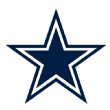
Dallas Cowboys: B-
Top needs: Linebacker, wide receiver, defensive tackle
The Cowboys had clear needs in this draft, and there were more than three. After Anthony Hitchens signed a big-money deal with the Chiefs in free agency, Dallas knew it needed to find a middle linebacker. After the Cowboys cut Dez Bryant earlier this month, they had to target a wide receiver, even with the signings of Allen Hurns and Deonte Thompson. They needed to figure out whether La'el Collins was going to stick at right tackle or move back to left guard. They needed a one-technique defensive tackle. And they needed a tight end, which looks even more pressing now with Jason Witten on the brink of retirement.
So I can see what Jerry Jones & Co. did on the first two days of the draft. I had Bama linebacker Rashaan Evans higher on my board, but I can't deny Leighton Vander Esch's high ceiling. The Cowboys see him as a Rolando McClain-type middle linebacker, who can be a playmaker against the pass and stick backs behind the line of scrimmage. Vander Esch surged up boards after the combine, but he had only one great year of tape at Boise State.
I see Connor Williams as more likely to move inside to guard, so that means Collins could stick at tackle. And that's a good value at No. 50 -- Williams looked like a top-15 pick in 2016 but dipped a bit on play and measurables -- his arms are a little short. I said on Friday night that Dallas grabbing wide receiver Michael Gallup was one of my favorite picks of the third round. He's an underrated player but don't expect him to replace Bryant. Dorance Armstrong Jr. (116) had an injury-plagued 2017 season but had 10 sacks in 2016. You trust defensive coordinator Rod Marinelli to get the best out of him. Dalton Schultz (137) isn't going to replace Witten, but at least Schultz isn't allergic to blocking. I thought Mike White (171) could have gone late in the second round, so that's a good pick. If Bo Scarbrough can play special teams, that's a good pick late in the seventh round.
Where was the defensive tackle, though? That's still a weakness, and maybe Dallas can find a street free agent to play a role. And if Witten does retire, do they have a starting-caliber tight end on the roster?
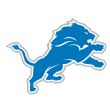
Detroit Lions: B-
Top needs: Running back, defensive line, interior offensive line
Matt Patricia's first draft as coach of the Lions could be defined by whether they finally find a consistent running game. The O-line and running back focus were clear. Detroit moved up eight spots to No. 43 (and surrendered pick 117) to take Kerryon Johnson, who had 20 total touchdowns last season. Johnson was my ninth-ranked back, and I had higher players on my board, plus the injury concerns at Auburn give me pause. There's no doubt that he's talented, but is he going to be a three-down back? Can he be relied upon in pass protection? Detroit finished last in rushing yards and yards per rush last season, so it's impossible to get worse. If Johnson can make an instant impact as a rookie -- and maybe break the streak of 68 straight games without a 100-yard rusher -- that deal might be worth it.
Detroit helped the running game with center Frank Ragnow in Round 1 (20), and got a potential steal at 153 in offensive tackle Tyrell Crosby, who played left tackle at Oregon and had a foot injury in 2016. And fullback Nick Bawden late in the seventh round is going to help there, too. The best true blocking fullback in this draft should make that team. Safety Tracy Walker (82) went higher than I thought he'd go, but the four-year starter impressed teams at the combine. Da'Shawn Hand (114) is a Patriots-type pick -- he has all the traits in the world to be a great player, and he could play defensive tackle or defensive end. The Lions gave -- who else? -- the Patriots a 2019 third-round pick to trade up to get him.
The NFC North is a tough division, and a running game really matters. If Detroit found its workhorse -- and players to help him -- this could be a good class. But that's no certainty.

Los Angeles Rams: B-
Top needs: Linebacker, offensive tackle, safety
It's tough to grade this Rams draft because they had only one pick on the first two days. Their first-round pick (No. 23) is essentially wide receiver Brandin Cooks, who is already a productive NFL player but will be looking at a massive contract next offseason. If Rams GM Les Snead and coach Sean McVay gave up a first-rounder for Cooks, they better be prepared to pay up to keep him, or else that's a bad trade. Still, consider that Cooks is just 24 years old, and no wide receivers were taken ahead of that No. 23 slot. It's certainly possible that they got the best wide receiver available. They gave up this year's second-round pick (No. 56) in the trade for Sammy Watkins, whom they lost in free agency. That trade looks worse than the Cooks addition. The Rams spent heavily to try to upgrade their receiving corps, but there's better value in Round 2 of the draft. Receivers James Washington and D.J. Chark were still on the board at that pick.
We also have to factor in the additions of cornerbacks Aqib Talib and Marcus Peters, who cost late picks in this draft. They're good players -- for 2018, at least.
Joe Noteboom (pick 89), who started 40 games at TCU, at both left and right tackle, is a good developmental player for a team with an aging offensive line -- left tackle Andrew Whitworth turns 37 during the season. Brian Allen (111) gives them center depth, where John Sullivan turns 33 before Week 1. I like Obo Okoronkwo (160), and Wade Phillips is going to set him loose off the edge in his 3-4. Micah Kiser (147) and Justin Lawler (244) were two more who stood out on a busy Day 3.
Snead has clearly placed an emphasis on finding underrated talent in Rounds 4-7, and he could have some finds here. I just don't know how many of them will be able to contribute as rookies.
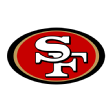
San Francisco 49ers: B-
Top needs: Inside linebacker, cornerback, offensive tackle
I thought the 49ers might pounce on defensive back Minkah Fitzpatrick at No. 9. When they took Mike McGlinchey, though, we knew something was up because a starting offensive tackle wasn't a true need. That spot opened up later in the night as GM John Lynch dealt right tackle Trenton Brown (plus pick 143) to the Patriots for the 95th pick. So I see what Lynch and coach Kyle Shanahan see in McGlinchey, a big 6-8 tackle who is probably better on the right side. He needs to get stronger. His body type and feet remind me of Andrew Whitworth, who has had a great career after being taken by the Bengals in the second round of the 2006 draft. McGlinchey was the name I heard as the biggest riser over the past two weeks.
San Francisco didn't have its original second-round pick because of the Jimmy Garoppolo trade -- I think they're OK with how that turned out -- but Lynch moved up in Round 2 (with the pick the Niners got from the Saints in last year's draft) to grab a pass-catcher for his quarterback. Dante Pettis (44) had 22 receiving touchdowns over the past two seasons, and had nine career punt return TDs, including four last season. He's an elite return man who immediately becomes a deep threat for Garoppolo. It did cost a third-round pick, but the 49ers had extras between the earlier Patriots' trade and the Bears moving up to get Mitchell Trubisky last year.
With the uncertainty around Reuben Foster's future, I thought San Francisco might go after a linebacker early, but it waited until pick 70 to grab Fred Warner, a versatile playmaker who started 42 games at BYU. Kentavius Street (128) is a powerful defensive end. Tarvarius Moore (95) was farther down on my board, but I see the athleticism on tape that could cause the 49ers to fall in love with him. Safety Marcell Harris (184) missed the entire 2017 season because of an Achilles' injury, but he's worth a flier in the sixth round.
There were a couple of reaches here, but we have to factor in the Garoppolo deal, too. So the 49ers are in a much better spot than they were when Lynch took over.
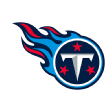
Tennessee Titans: B-
Top needs: Linebacker, guard, tight end
Credit GM Jon Robinson and the Titans for being aggressive. They traded up for all three of their top picks. The problem is that depleted their capital for the rest of the draft, and this team isn't without holes. Yes, Tennessee made the playoffs (and won a game), but I see a depth chart with aging edge defenders and issues at guard, tight end, inside linebacker and wide receiver. So the Titans ended up with only first- and second-round picks, then didn't have another selection again until the fifth round. They better hit on who they moved up for.
As for the players they got with those trades, I do see the fits. The Titans moved up ahead of 3-4 teams Pittsburgh and New England for Rashaan Evans (pick 22), who will fill Avery Williamson's spot at inside linebacker. Evans is an every-down player who can run with tight ends and backs, and he's a great fit for Tennessee's defense. I actually had pass-rusher Harold Landry to the Titans in the first round in my two-round mock, and they moved up to No. 41 to get him in the second round. He's the best true 3-4 edge rusher in this class.
I love the symmetry of former Patriot Mike Vrabel taking a quarterback with the 199th pick -- the same spot in which New England grabbed the greatest quarterback of all time. And Luke Falk actually looks up to Tom Brady and patterns his game after him. Falk isn't a great athlete, and he doesn't have the strongest arm, but that's what teams said about Brady in 1999. So, no, I don't think Falk is the next Brady, but he can be a solid NFL backup.
Again, the aggressive day from Robinson's front office is noted. With only four picks, the Titans are going to have to hit on a few undrafted free agents, too.
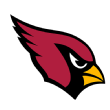
Arizona Cardinals: C+
Top needs: Wide receiver, quarterback, defensive back
The Cardinals were in the market for a quarterback. If Sam Bradford is your projected starter, you have to be. Nobody questions Bradford's talent, but everyone knows Bradford's injury history. It is what it is. The Cardinals gave up a third- and a fifth-rounder to move up the five spots to draft Josh Rosen at 10th overall, and given that he's quite literally my No. 10 overall prospect in this class, I'd say the value lines up. But there are question marks.
Rosen has pocket awareness, touch, timing and will occasionally make a throw that will have you hitting rewind in appreciation. He also has missed time over each of the past two seasons with concussions and a shoulder injury -- his throwing shoulder. I think there's a decent possibility that he's the first rookie starter out of this group. How he holds up (the Arizona O-line would make me hesitate) is the question early on.
Christian Kirk (pick 42) is a smooth route-runner, but more likely a useful slot fit than the eventual replacement for Larry Fitzgerald. Mason Cole (97) could be a starter at center as soon as Week 1. Chase Edmonds (134) has talent and jumps into a scattershot mix behind David Johnson. Ultimately, it's all about Rosen, who has a high-end ceiling if he stays healthy.
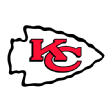
Kansas City Chiefs: C+
Top needs: Outside linebacker, safety, cornerback
The job requirement is to give a grade now. What the Chiefs' 2018 draft grade ultimately becomes is really all about what a guy who has thrown a whopping 35 NFL passes becomes. Then-GM John Dorsey (now in Cleveland) traded up to get Patrick Mahomes. Because of that, Kansas City didn't have a first-round pick this year. In short: Mahomes now has the starting job with Alex Smith in Washington -- it needs to work out.
Beyond that, the Chiefs did find a couple of useful pieces. The Chiefs regressed on defense last year -- particularly up front -- and their Day 2 picks reflected that. Breeland Speaks (pick 46), Derrick Nnadi (75) and Dorian O'Daniel (100) all have ability, and Nnadi and Speaks aren't far from plenty of snaps based on the current depth chart. Armani Watts (124) and Tremon Smith (196) are potential insurance in the secondary.
The word is sixth-rounder Kahlil McKenzie is going to flip from defensive tackle to guard. Stranger things have happened. The Chiefs are arguably the most unpredictable team of 2018. Your move, Mahomes.
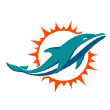
Miami Dolphins: C+
Top needs: Offensive line, linebacker, running back
This has been an interesting offseason of change for the Dolphins, who have parted ways with several important players, including Ndamukong Suh, Mike Pouncey, Jarvis Landry, Jay Cutler and Julius Thomas. Yes, they've added Robert Quinn, Josh Sitton, Danny Amendola, Frank Gore and Albert Wilson, but there are still some sizable holes on the roster. I hear "culture" blamed, but at some point you have to be accountable for what's on the field. I put the entire offensive line on my list of questions because no spot outside left tackle Laremy Tunsil should be set, and they needed depth at several other positions.
Snagging Minkah Fitzpatrick at No. 11 is a great value. I thought he was a top-five player in this class, but teams got a little scared because he doesn't have a true position. He's a little bit of a tweener who doesn't have true safety measurables. The Dolphins just need to get him on the field. This is one of Nick Saban's favorite players ever. Mike Gesicki (pick 42) is going to slot straight into Thomas' spot, but he's not going to block anybody. He's a slot receiver with a big -- and super athletic -- frame, and he has good body control.
Jerome Baker (73) is a true cover linebacker with range who will be a core special-teamer and help out on third downs. As McShay pointed out, the defense has been shredded by tight ends, and Fitzpatrick and Baker help. Durham Smythe (123) is a better blocker than receiver. Kalen Ballage (131) is the guy to watch in this class. Surely Adam Gase doesn't expect to play Gore on every down, and Ballage caught 82 passes in his career.
The one big question coming out of this draft: Where was the quarterback? Miami is really going to go into the 2018 season with Ryan Tannehill and Brock Osweiler as its top two QBs. I can't give a "B" here.
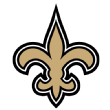
New Orleans Saints: C+
Top needs: Tight end, defensive end, quarterback
The Saints had one of the best immediate-return draft classes of the past 10 years this past season. Marshon Lattimore. Ryan Ramczyk. Marcus Williams. Alvin Kamara. Alex Anzalone. I mean ... are you kidding? Add that much talent in one shot, then factor in a 39-year-old quarterback, and you figure you might be willing to take a risk or two.
Well, I get it. They have a big need, and they're going for it. I also have to grade these in a vacuum, and by that measure this class is a big question mark. The Saints gave up a whopper of a package -- next year's first-round pick and a 2018 fifth-rounder -- to move up to take Marcus Davenport, a pass-rusher out of Texas-San Antonio. The kid's got upside, but that's serious value. This after they were already down a second-rounder in this draft due to a previous trade. Tre'Quan Smith (pick 91) was a decent value at a need position -- can Ted Ginn Jr. play forever? -- and Rick Leonard (127) is an interesting bet at tackle. Kamrin Moore (189) has the chance to stick in this secondary, though it's not nearly as thin back there as it was a couple of years ago.
The Saints are a Super Bowl contender. It's clear they feel added pass-rush help could be a difference-maker in that pursuit. If Drew Brees gets another Lombardi, it'll all be worth it. If not, they gave up a lot.

Pittsburgh Steelers: C+
Top needs: Inside linebacker, defensive back, wide receiver
This is the rare class in which I liked every pick except the first one. Safety Terrell Edmunds was way down my board, and he's a risk at No. 28 overall. There were a lot of good safeties on the board. Justin Reid? Jessie Bates III? I can see why the Steelers like Edmunds' traits, but his tape didn't match his athleticism.
After that pick, my only question for the Steelers is: Where's the linebacker? They didn't find a replacement for Ryan Shazier inside, and they didn't even take a flier on an edge player on Day 3.
Oklahoma State tandem Mason Rudolph (pick 76) and James Washington (60) were so good together that Pittsburgh decided to bring them both along. And if the Steelers found the eventual replacements for Ben Roethlisberger and Martavis Bryant, this draft will be viewed much differently. But Rudolph isn't without risk -- he's a little stiff, but he throws a beautiful deep ball. Offensive tackle Chukwuma Okorafor (92) started 39 games at both tackle spots for Western Michigan. H-back Jaylen Samuels (165) is one of the most versatile offensive players in the entire class. He's only 5-11, but he had 201 catches in his career.
So, again, the first-round risk was too high for me, and the absence of a linebacker means I have to downgrade this class.

Seattle Seahawks: C+
Top needs: Offensive line, defensive back, defensive end
No need to bury the lede here: I've done this nearly 40 years, and 35 years with ESPN. The drafting of Shaquem Griffin (pick 141) was one of the most memorable moments I can remember, and we got to experience it with him and his family. That was pretty special. But what you came for: He was also a steal! I thought Griffin could come off the board in Round 3. He accurately pointed out that Seattle can be creative on defense and find a good role for him. I agree.
Now to the question marks. I like Rashaad Penny (27), but even after adding value by trading down, I saw him as a reach. I had Sony Michel rated higher, and I would have looked for running back help later. The Sheldon Richardson trade left the Seahawks without a second-rounder -- overall: ouch. They have Duane Brown to show for a third, and now also added a player I really like in Rasheem Green (79). Cliff Avril is coming off an injury-plagued season and will be 32 years old. Green can really help and is a young guy with upside. Will Dissly (140) is depth at tight end, and he's the best blocking tight end in this draft. Michael Dickson (149) is a potential Pro Bowl punter, and Jamarco Jones (168) has experience and upside on the offensive line, though I could practically hear the Seattle fans in Dallas wondering why the Seahawks waited so long to address the O-line. They have a point.
Not a bad draft overall, I just wonder if they could do more with the first-round pick, and the loss of that second-rounder hurt.
